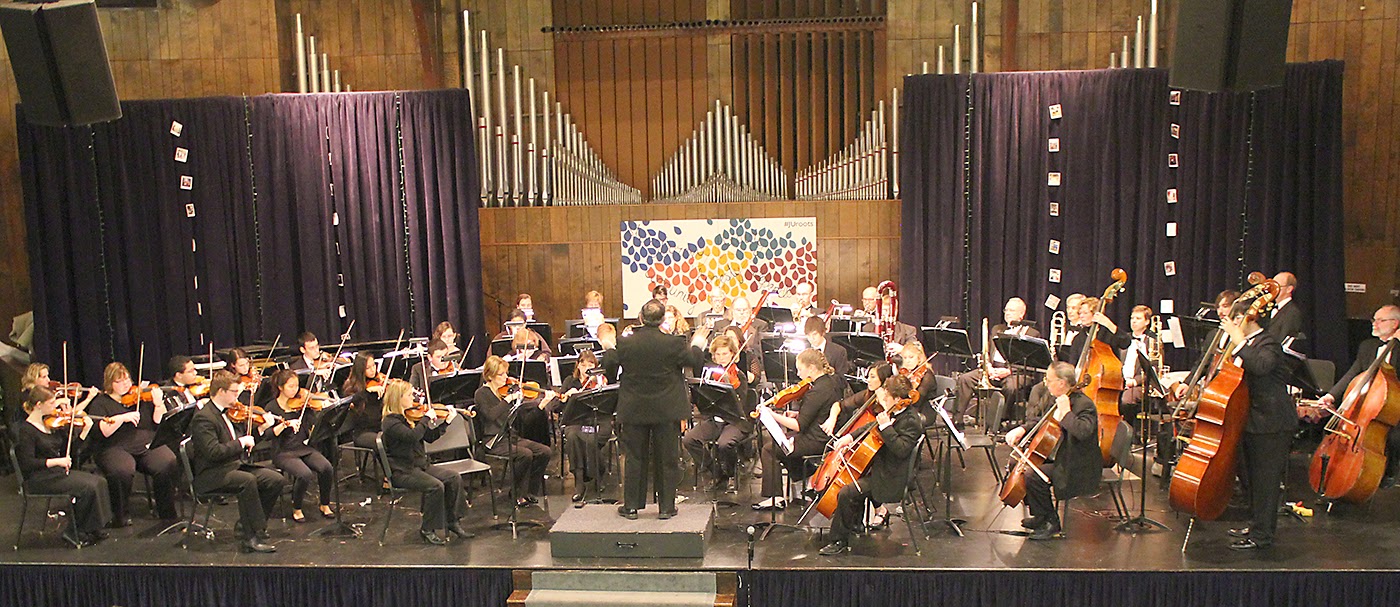The fact that a city of 100,000 people can support more than three entirely separate symphony orchestras is amazing in itself, but the incredible regenerative powers of the Judson Civic Orchestra offers proof that Elgin indeed has a distinguished past—and future—as a center for the fine arts.
Formerly known as the Elgin Community College Civic Orchestra and later, the Judson University Community Orchestra, this ensemble has had roots in the area for twenty years or more. Made up of students, teachers, and accomplished amateurs, the Judson Civic Orchestra (JCO) is now a semi-independent organization in residence at Judson University with a core of dedicated artists and a base of community support.
Their nicely programmed Fall Concert, held Sunday afternoon in Judson's Herrick Chapel, held itself to professional standards with three works from the classic repertoire, including an appearance by a guest soloist destined for great achievement. In tuxedos and formal black dress, the players were indistinguishable from their counterparts at the Hemmens or Chicago's Symphony Center.
 |
| Judson Civic Orchestra, conducted by Jim Franklin |
The arresting opening of Franz Schubert's "Overture to Rosamunde" (1820) was a perfect entree for this well-rehearsed orchestra, which sounds superb at forte and above. In this hall, less friendly to quiet passages and high voices, the more introspective moments of Schubert were, at times, hard to hear in the balcony over a large double bass section.
Yet the comparatively small space exposed intimacies of the music not usually heard in recordings or larger venues. Where other orchestras would take pains to hide the musical seams in these great works, this JCO performance offered a more transparent view into the craft and structure of the music.
Guest artist Jakob Gerritsen, a Jacobs High School senior and winner of the JCO Concerto Competition, presented Concerto No. 2 for Double Bass and Orchestra (1767) by Carl Ditters von Dittersdorf, one of only a few double bass solos in the professional repertoire. Playing entirely from memory, Gerritsen faced the technical challenges with aplomb, and delighted the audience with a rare look at highly skilled playing on an instrument not normally entrusted with melody.
JCO conductor Jim Franklin looked like a seasoned professional marshaling the resources of the 49-piece orchestra through Johannes Brahms' substantial Symphony No. 1 in C Minor (1855-1876). Highlighted by brilliant solos from the principals of nearly every section, this diverse and stalwart group of musicians proved capable of reproducing all the shades and textures of a colorful and historic score.
A civic orchestra brings out the best in a community: the passion of amateur artists, the discipline of educators, and the enthusiasm of audiences, combined with the vision of institutions like Judson University whose ongoing support is vital to the JCO's success. And filling a gap between high school and an elusive professional career, this excellent civic orchestra meets the needs of a growing number of dedicated amateur musicians who call the Fox Valley home.
















